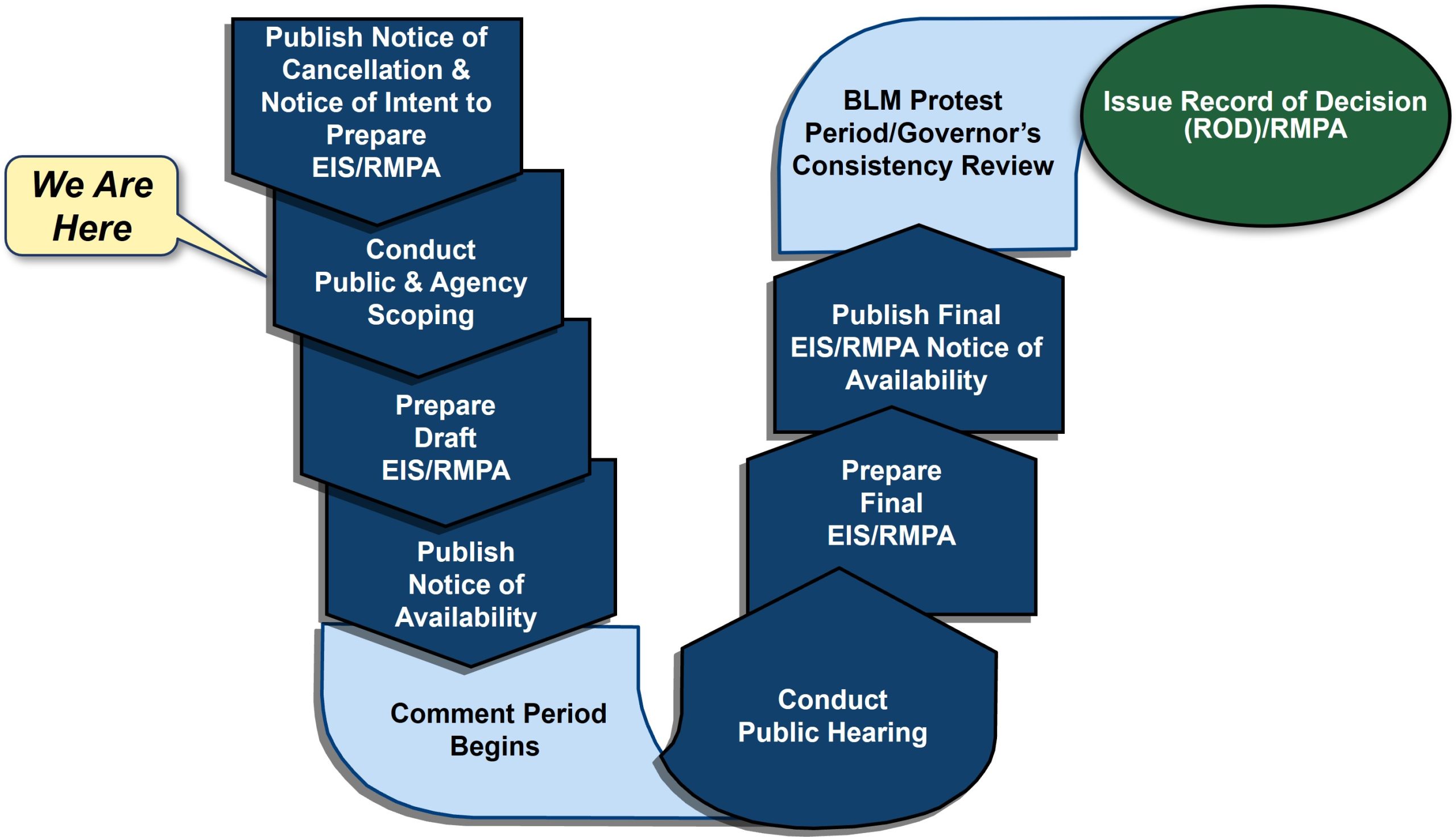EIS/RMPA Process
Environmental Impact Statement (EIS) Process:
- Allows agency decision makers to take a “hard look” at environmental impacts of major Federal actions under the agency’s purview. Actions focus on the reasonable alternatives, which are developed during scoping.
- Describes significant environmental impacts those alternatives could cause and conceptual measures to mitigate their impacts.
- Provides details about a proposed Federal action’s purpose and need.
- Provides opportunities for public participation through comment periods for scoping and review of draft documents.
- Must be a concise, plainly written document. This enables those not taking part in EIS preparation to understand issues and the environmental effects of the various reasonable alternative ways to address those issues.
- Includes interagency or intergovernmental coordination and consultation.
- The approving official must identify the agency’s preferred alternative in the final EIS. The final EIS presents public comments on the draft EIS’s (DEIS) content and responses to those comments.
Resource Management Plan Amendment (RMPA) Process:
- A land use plan or resource management plan provides a framework for the BLM management of public lands.
- A land use plan amendment also known as Resource Management Plan Amendment (RMPA) is identified when there is “a need to modify management or accommodate a project that may result in a change in the scope of resource uses or a change in the terms, conditions, and decisions of the approved plan”. These changes may be to a specific resource area. (H-1601-1)
- BLM manages public lands under principles of multiple-use and sustained yield as mandated by the Federal Land Policy and Management Act (FLPMA).
- Uses a systematic interdisciplinary approach to integrate physical, biological, economic, and other sciences.
- Provides for meaningful involvement and is prepared with involvement of Federal, State, County, Local and Tribal governments.
- Is prepared in compliance with National Environmental Policy Act (NEPA) requirements.
- Provides opportunities for meaningful public participation in the land use planning process, including but not limited to planning criteria development and review, advance notice of public meetings, comment periods and protest of planning decisions. Submission of the proposed RMPA for Governor’s consistency review and appeal to the governor of the state(s) involved and must identify any relevant known inconsistencies with the officially approved and adopted plans of state and local governments.
- An RMPA is approved when a Record of Decision (ROD) is signed to adopt the RMPA.
- Publish Notice of Cancellation & Notice of Intent to Prepare EIS/RMPA
- Public and Agency Scoping
- Prepare Draft EIS/RMPA
- Publish Notice of Availability
- Comment Period Begins
- Conduct Public Hearing
- Prepare Final EIS/RMPA
- Publish Final EIS Notice of Availability/RMPA
- BLM Protest Period/Governor’s Consistency Review
- Issue Record of Decision/Resource Management Plan Amendment

